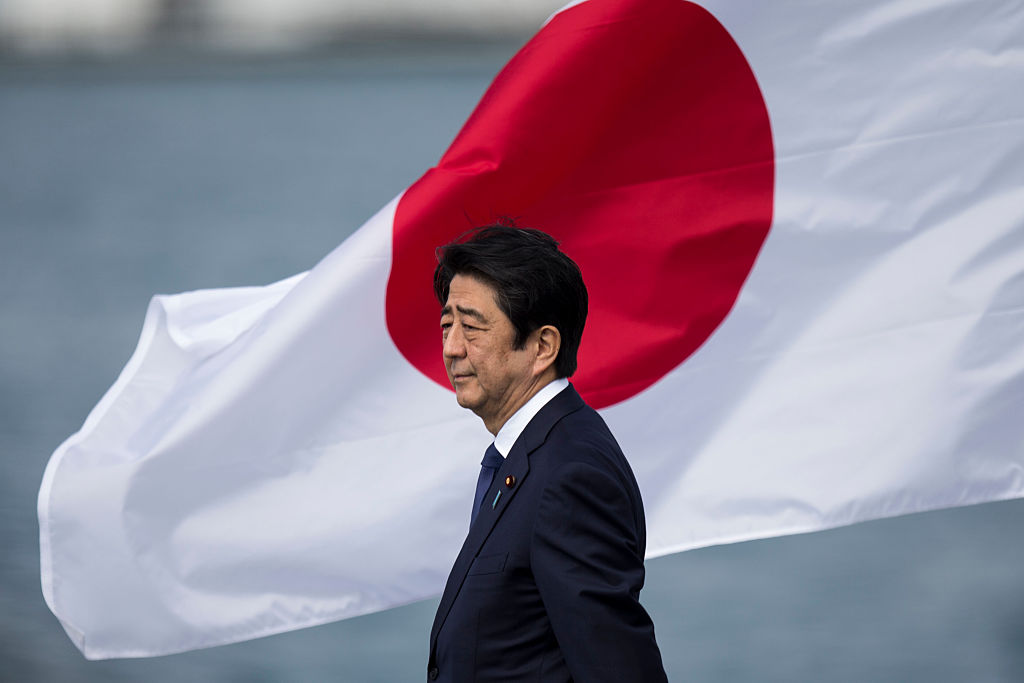
Michael J. Green’s volume on contemporary Japanese grand strategy is one of the latest in a growing repository of studies shining a spotlight on the recent resurgence of Japan’s national power and purpose—a process largely presided over by the late prime minister Shinzo Abe.
Like his previous magnum opus on American strategic engagement in Asia, By more than providence, Green now applies his treatment of grand strategy to modern Japan. This is a necessary intervention because of still lingering misperceptions that Japan has been rudderless in articulating or implementing any form of well-crafted strategic approach that adequately addresses the imposing challenges it now faces in the Indo-Pacific. Naysayers still view Japan as a ‘crippled giant’, hobbled by constitutional and self-imposed fetters upon its national power, with declining demographics and mired in economic sclerosis. Green sets out to prove them wrong.
In Green’s conception, grand strategy is ‘comprehensive use of all instruments of national power beyond just military means’ to achieve national objectives. This is set within a realist framework drawn from international relations theory, which he has employed in previous works. It neatly divides Japan’s efforts to improve its strategic posture into the categories of ‘internal balancing’ and ‘external balancing’ against threats and rivals. In the former, states ‘maximize their own relative military, economic, or other strengths’, while the latter entails building ‘alliances to restore a favourable balance of power’.
With this essential guiding framework in mind, the book examines how these two (interactive) mechanisms have been deftly exercised by Tokyo to improve its deteriorating strategic position in the Indo-Pacific. In the first instance, it has done so by reforming its security apparatus, restructuring its defence architecture and recalibrating its military forces. In the second instance, it has capitalised on its deep alliance relationship with the United States, as well as expanded its range of security partners by building enhanced ties with Australia, India and the Philippines, for example.
Green’s book takes a long view of Japan’s strategic posture and is infused with historical references and insights into the philosophical streams of strategic thought and their legacies in Japan. He reveals the intellectual pedigree of today’s strategists through historical vignettes on influential thinkers such as Inazo Nitobe and Kakuzo Okamura (though Kita Ikki is curiously absent). But the book’s title—Line of advantage—is taken from a quote by Aritomo Yamagata, Japan’s first army chief of staff, two-time prime minister and ‘elder statesmen’ (genrō) of the Meiji period, and is cleverly chosen to convey the immutability of the strategic predicament that the country faces as a result of its geography, scarce resources and history.
Aritomo declared in 1890 that Japan had to think beyond its immediate territorial defense to consider where to draw the ‘line of advantage’ (riekesen) to shape the external environment and prevent a rival power from controlling critical access points to Japan.
The upshot of this dilemma has been the historical division between the ‘continental’ school of strategic thinkers who prioritise Japan’s engagement with mainland Asia and the ‘maritime’ school that recognised Japan’s destiny as an insular trading power. After disastrous incursions into continental Asia, through the occupation of Korea and Manchuria and a quagmire conflict with China in the 1930s and 1940s, the maritime school returned to the fore. Indeed, official Japanese white papers self-characterise the country as a ‘maritime nation’. This provides the raison d’être for alliances and partnerships with other maritime powers today (including through the Quad), and an appropriate concentration on naval and sea power.
Green argues that the era of the Yoshida Doctrine, when Japan mutely sheltered under the US-alliance umbrella while building its economic prowess during the Cold War, is now truly closed as Japan steps into a more self-reliant and internationally proactive security role in the Indo-Pacific. Much of the credit for this redounds upon Abe, and the author’s admiration for the late prime minister is manifest throughout.
Without rehearsing the litany of Abe’s achievements towards this outcome and his central role in bringing about a quiet transformation in Japan’s strategic posture, it’s worth flagging one example that exemplifies the new security identity Japan now projects. Among Abe’s many triumphs, the ‘free and open Indo-Pacific’ concept stands out as a key success. With it, Tokyo championed a grand ‘vision’ for the Indo-Pacific to achieve security, stability and prosperity as part of a rules-based order. That Tokyo was able to influence the US to make the free-and-open concept a central plank of its own Indo-Pacific strategy and bring about adoption or buy-in from other regional powers such as Australia, India and ASEAN is testament to its continuing impact. What’s more, during the volatile administration of President Donald Trump, many argued that custodianship of the liberal international order had (temporarily?) passed into the hands of Abe and Japan.
Back in 2001, Green wrote a seminal work on Japanese security strategy, Reluctant realism, in which he argued that Tokyo was grudgingly beginning to face up to the need to improve its security posture as new risks began to emerge. Now, thanks principally to the extraordinary efforts of former prime minister Abe, detailed in this new book, Japan is in a far better position to do so. This is fitting testament to Abe’s statesmanship. Green aptly concludes that this newly proactive Japan is here to stay, declaring that ‘the strategic trajectory that was consolidated under Abe is not likely to change soon’.

